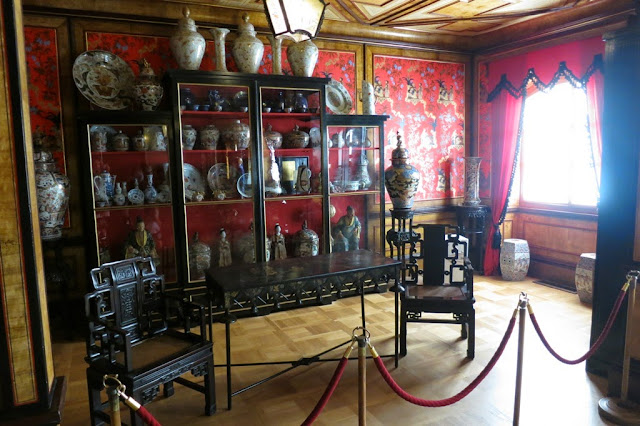A few weeks ago I have taken you to
Nidzica. It proved to be pretty disappointing. To make it up to you, I have decided to go still this summer to the most important castle of the Teutonic Knights -
Marienburg or Malbork. This will be the fourth castle that we are visiting together, after
Bytów and
Olsztyn.
Why did I chose Malbork? Because it is the best. It has been proven and certified by UNESCO, which enrolled Malbork on the World Heritage Sites List.
The Malbork castle is so big, that to fully assess its architecture we will first look at a model.
Let's move towards the main entry.
The Malbork castle was built and rebuilt between thirteenth and fifteenth centuries. It lies between two arms on the Nogat river. As a result, only one side of the castle was easily accessible. As you might have guessed, this very side was well guarded by high walls and a moat.
When visitors crossed the bridge over the moat, they were faced with a huge gate.
It was closed with a special wooden grid.
The castle comprised three levels - the Lower Castle, the Middle Castle and the High Castle, each of them constituting a separate defense line. The courtyard of the Middle Castle was large enough to accommodate large groups of visitors.
The Middle Castle was the residence of the Great Masters of the Teutonic Knights Order. You can see some of them here.
This is where they were receiving their noble guests. They had for this a big refectory (or dinning room).
On the walls the guests could admire paintings showing scenes from the Bible or from the history of the Knights.
The main refectory had a special system of floor heating, connected to a huge oven on the floor below.
In warm days, the Master could also invite his guests to the Summer Refectory.
The Summer Refectory is relatively large but the ceiling is supported by just one column. There is a story saying that one day the "government" of the Teutonic Knights was gathered in the Summer Refectory. A Polish person has let some troops know and they tried to shoot in the direction of this single column. They have almost made it.
The High Castle was mainly a secure defense place, guarded by yet another wall and moat.
The gate was guarded day and night.
The bascule bridge could be easily opened and closed thanks to this counterweight.
The courtyard of the High Castle was smaller, fenced with windows from which the defenders could throw stones or hot oil.
In the middle of the courtyard stands a well that was ensuring to the defenders of the castle supplies of clean water.
The High Castle was equipped with a big kitchen. The knights were only eating twice a day, once around noon and a second time in the evening. They only had meat once a week.
The High Castle had obviously its own refectory. On the wall you can see the Virgin Mary - after all the castle was dedicated to her (Marienburg means "city of Mary").
The bedrooms were modest. You may notice also that the beds were short for contemporanous standards. This is because the knights were shorter than men of today.
In the event that invaders would manage to enter the High Castle, the last defence line was in the Gdanisko (Dansker) tower. It was accessed by a special corridor. On one side you can see the castle ...
... on the other the Nogat river.
The corridor had special wholes, through which the defenders could throw on the attackers rocks or boiling water.
Nowadays, the castle is obviously a safe place. It houses a museum where masterpieces of medieval art are exhibited. Like this wooden altar, probably made in the workshop of Vit Stwosz, the author of the altar in the
St. Mary Casilica in Kraków.
I really encourage you to visit the Malbork castle. It is truely impressive. And the inhabitants are very nice, I
must admit.
(Pssst. If you are afraid of the Knights, you can also try the
virtual tour of the Malbork castle).






































































